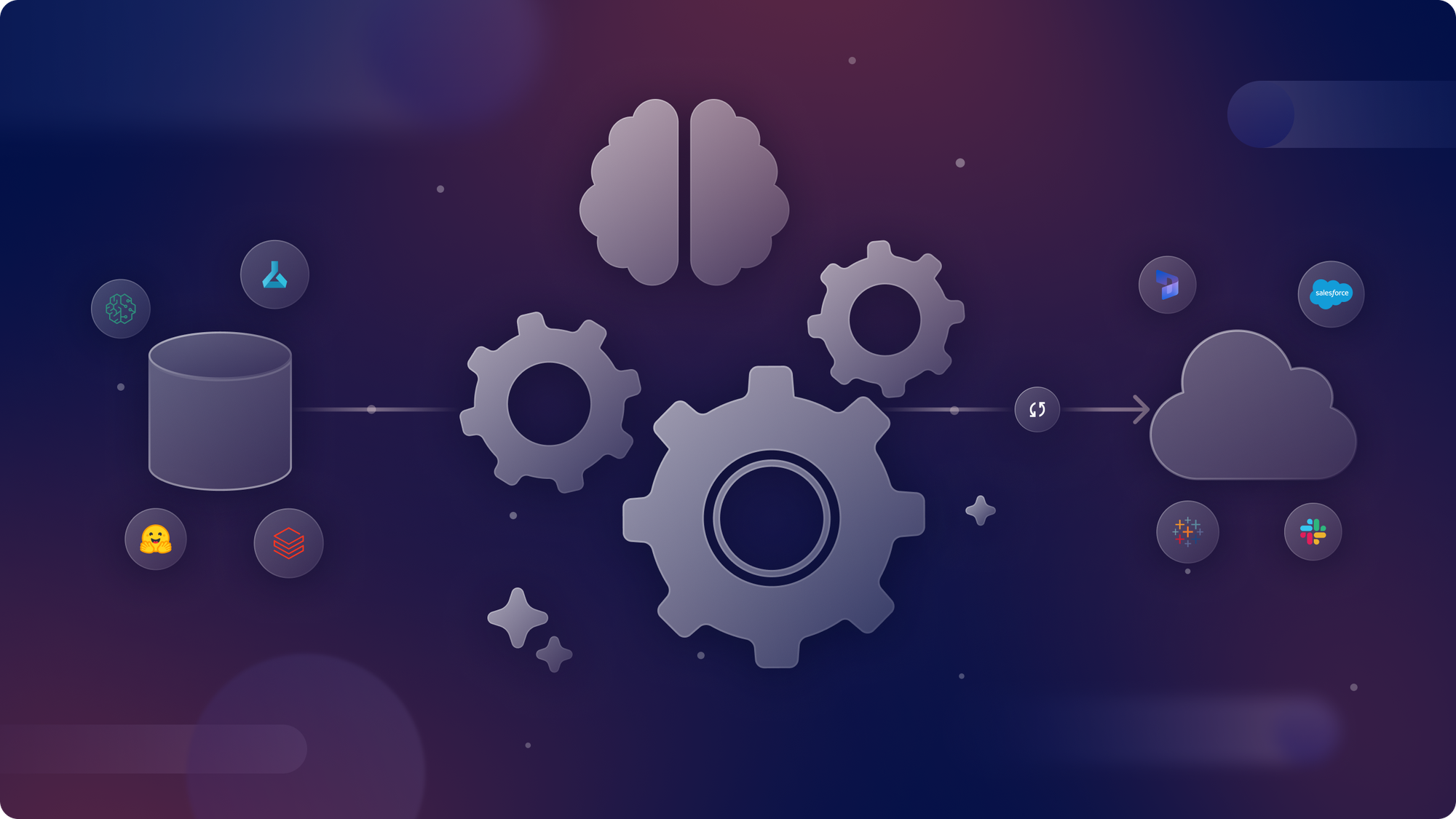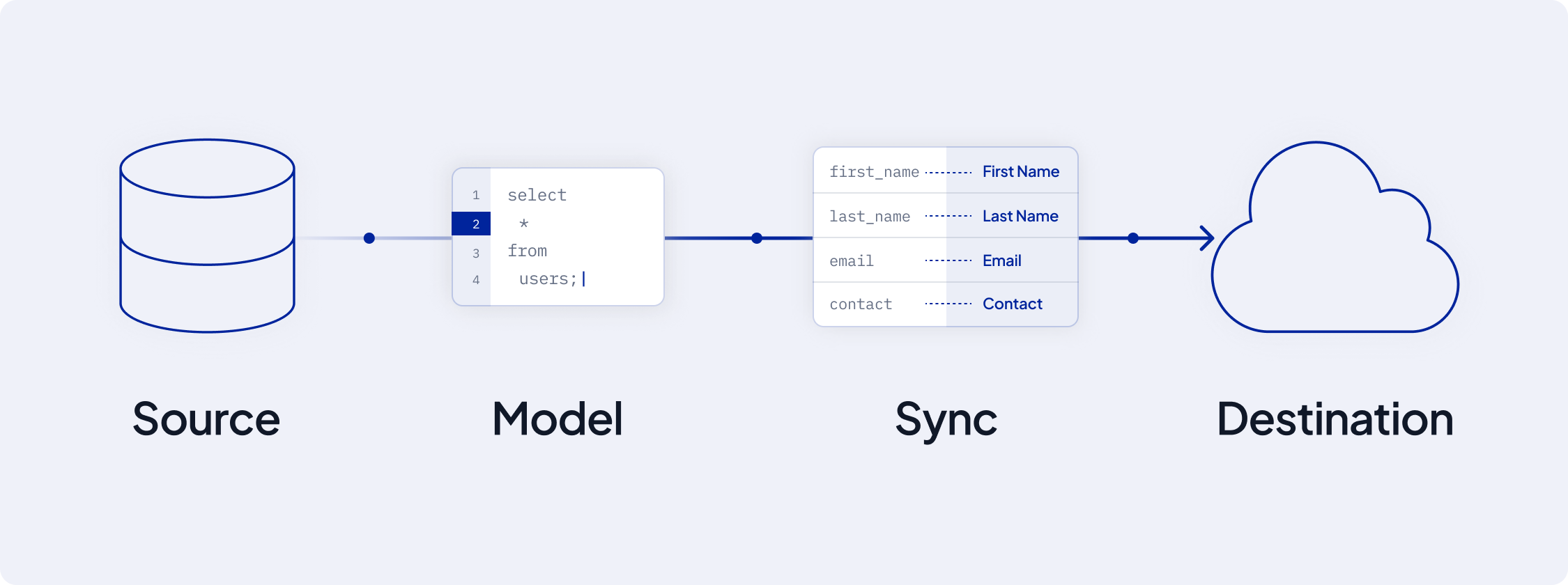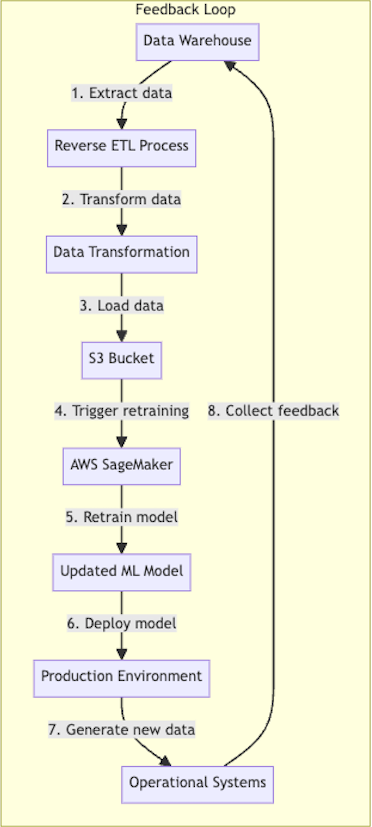Unlock the Potential of AI: How Reverse ETL is Supercharging MLOps

The difficulty in the constantly evolving fields of artificial intelligence and machine learning is frequently not in creating complex models but rather in successfully operationalizing them. We typically struggle as AI/ML engineers to integrate our models into current business processes and systems because of the complexity of doing so.
This is where the strategy of reverse ETL is useful.

Background:
Let's first define a few terms before discussing how Reverse ETL fits into the AI/ML ecosystem:
- ETL (Extract, Transform, Load): In the past ETL procedures typically included gathering information, from sources reshaping it to suit requirements and transferring it into a designated database or data repository. This method has long been fundamental to merging data.
- Reverse ETL: Reverse ETL flips this concept. It involves extracting data from a central repository (often a data warehouse), transforming it if necessary, and loading it into operational systems.
- Data Activation: Activating data involves transforming data into insights through its integration into tools and systems that support business operations and decision-making. This process bridges the gap between storing data and actually using it.
- MLOps: MLOps is a set of practices that aims to deploy and maintain machine learning models in production. It emphasizes collaboration between data scientists, ML engineers, and DevOps.
Leveraging rETL in AI/ML Workflows
- Data Activation:
- Reverse ETL facilitates the movement of ML model outputs and derived insights from data warehouses or data lakes to operational systems.
- Model Output Distribution:
- AI/ML engineers can use Reverse ETL to push model predictions and insights directly into business tools and applications.
- This makes ML-driven insights easily accessible to non-technical teams, enhancing data-driven decision making across the organization.
- Feature Store Integration:
- Reverse ETL can populate feature stores with the latest data from data warehouses.
- This ensures ML models have access to consistent and up-to-date features for training and inference, improving model accuracy and reliability.
- A/B Testing:
- Easily send outputs from different versions of a model (A and B) to separate groups within operational systems.
- This allows for more efficient comparison and evaluation of model performance, accelerating the iterative improvement of ML models.
- Simplified MLOps:
- Reverse ETL automates the process of moving data between ML pipelines and production systems.
- This reduces operational overhead for ML engineers, allowing them to focus more on model development.
Model Feedback Loop and Continuous Improvement
Reverse ETL plays a crucial role in establishing an efficient feedback loop for model tuning and continuous improvement:
Example: Data Warehouse to AWS SageMaker
1. Source: Data Warehouse (e.g., Databricks, BigQuery & Redshift) containing aggregated customer feedback, operational metrics, and model performance data.
2. Destination: AWS SageMaker, where the model is hosted and retrained.
Process: Reverse ETL job extracts relevant data from the warehouse. Data is transformed into the format required by SageMaker (e.g., CSV, Parquet). Transformed data is loaded into an S3 bucket accessible by SageMaker. A SageMaker pipeline is triggered to retrain the model using the new data.

By effectively aggregating and transforming feedback data from various sources, including data warehouses, operational databases, and file systems, into formats that ML platforms like AWS SageMaker can easily consume, Reverse ETL significantly improves the model feedback loop.
Use Case
Optimizing Sales Operations with Reverse ETL
Imagine ABC Corp, a mid-sized technology company, wanted to enhance its sales operations by leveraging AI/ML outputs more effectively. They had developed a customer churn prediction model that accurately forecasted which clients were at risk of not renewing their software subscriptions.
Challenge
- The churn prediction model results were stored separately from their customer data and sales information.
- Sales data was scattered across multiple sources, including their Data warehouse, billing database etc.
- The sales team had no easy way to access or act on the churn predictions in their day-to-day operations.
- There was a significant delay between when new data became available and when it was reflected in CRM like Salesforce CRM
Solution
- Data Integration:
- Connected to ABC Corp's data warehouse for historical sales data
- Integrated AI model data available in SFTP files
- Data Transformation:
- Utilized AI Squared's entity transformation to combine data from the warehouse and SFTP
- Created custom logic using Handlebar templates for on-the-fly data attribute transformation
- CRM Integration:
- Set up automated Sync flows to update customer records and populate custom objects in the CRM
- Real-time Updates:
- Leveraged incremental refresh capabilities to ensure delta changes in source were promptly updated in the CRM
Results
ABC Corp experienced significant improvements in their sales operations:
- Enhanced Decision-Making: Sales representatives gained access to up-to-date Model data and Sales data directly in Salesforce CRM, significantly improving their ability to prioritize leads.
- Operational Efficiency: The time to update Salesforce with new data decreased from daily batches to near real-time updates, reducing operational overhead by 90%.
Best Practices for Implementing Reverse ETL for MLOps

- Align with Business Objectives:
- Identify and prioritize use cases that directly impact key business goals.
- Ensure ML insights are actionable and measurable within existing business processes.
- Ensure Data Quality and Governance:
- Implement data validation and cleaning processes.
- Establish clear data access controls.
- Monitor and Optimize Continuously:
- Regularly review data flows for efficiency.
Conclusion
Reverse ETL is helping organizations operationalize AI/ML model results. AI Squared's Enterprise Reverse ETL platform and open-source platform Multiwoven are at the forefront, enabling data teams and ML engineers to achieve remarkable results.
By bridging the gap between data warehouses, AI model output, and operational systems, these solutions are helping companies realize up to 10X improvements in data utilization, setting a new standard for data-driven decision-making.

